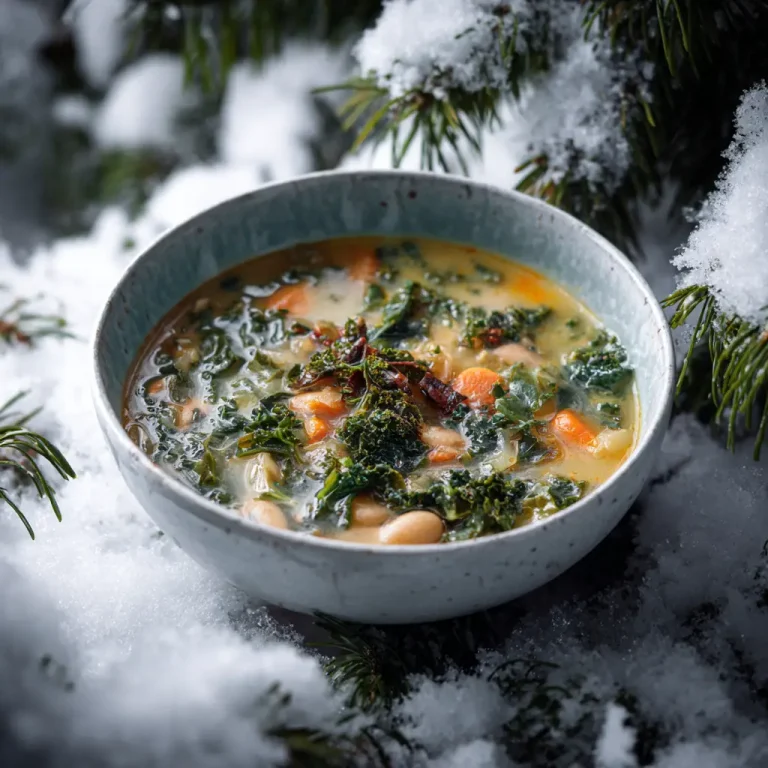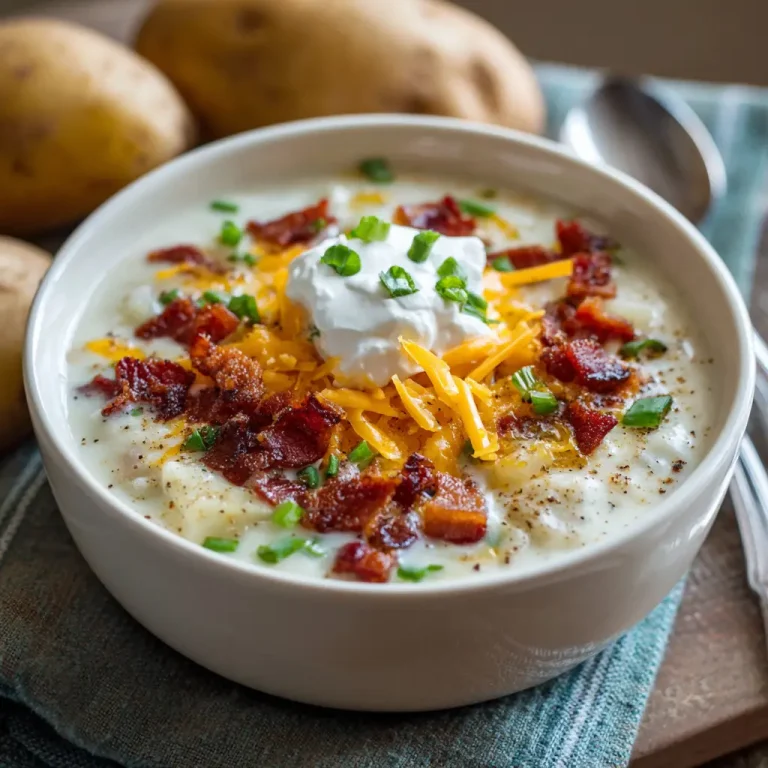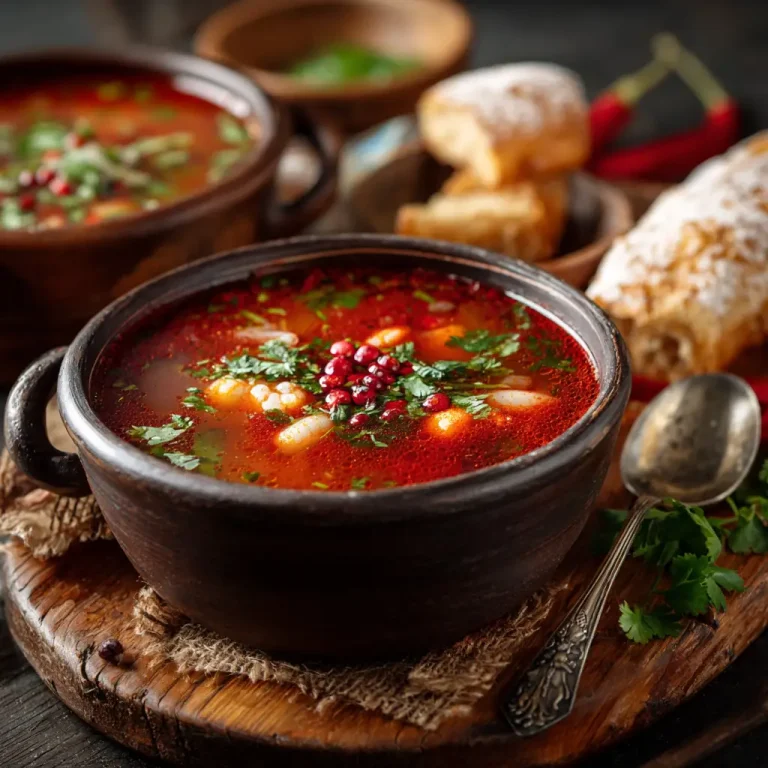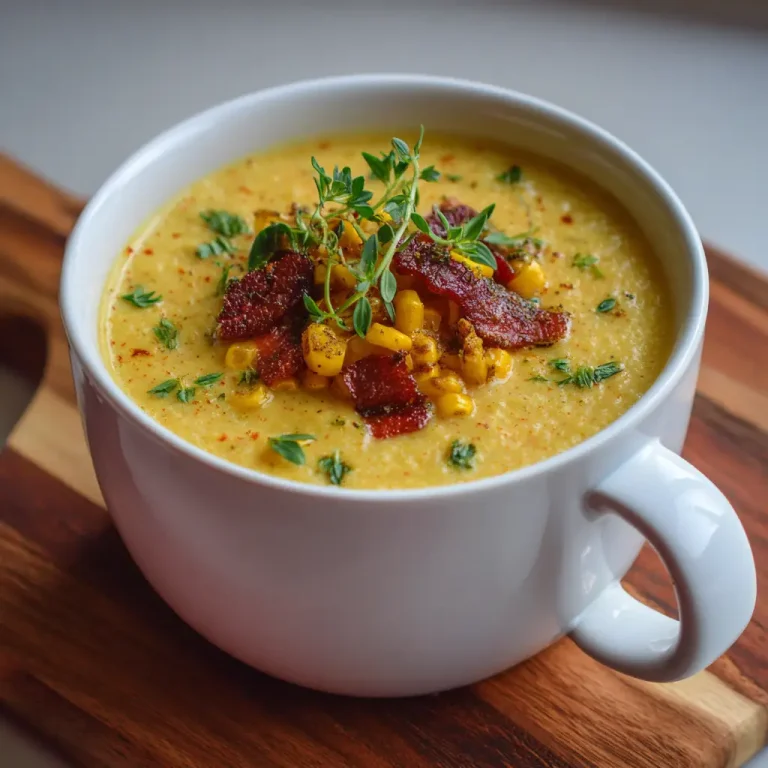Pea Soup Recipe | Easy Homemade Split Pea Soup for Comfort and Nutrition
Introduction
A steaming bowl of pea soup has a comforting quality that can turn any chilly evening into something special. The gentle aroma of simmering peas mingled with herbs and vegetables fills the kitchen with warmth and familiarity. Pea soup has been part of home cooking traditions for centuries, offering both nourishment and simplicity in every spoonful. Whether made with fresh green peas or dried split peas, the result is a creamy, earthy dish that satisfies both hunger and nostalgia.
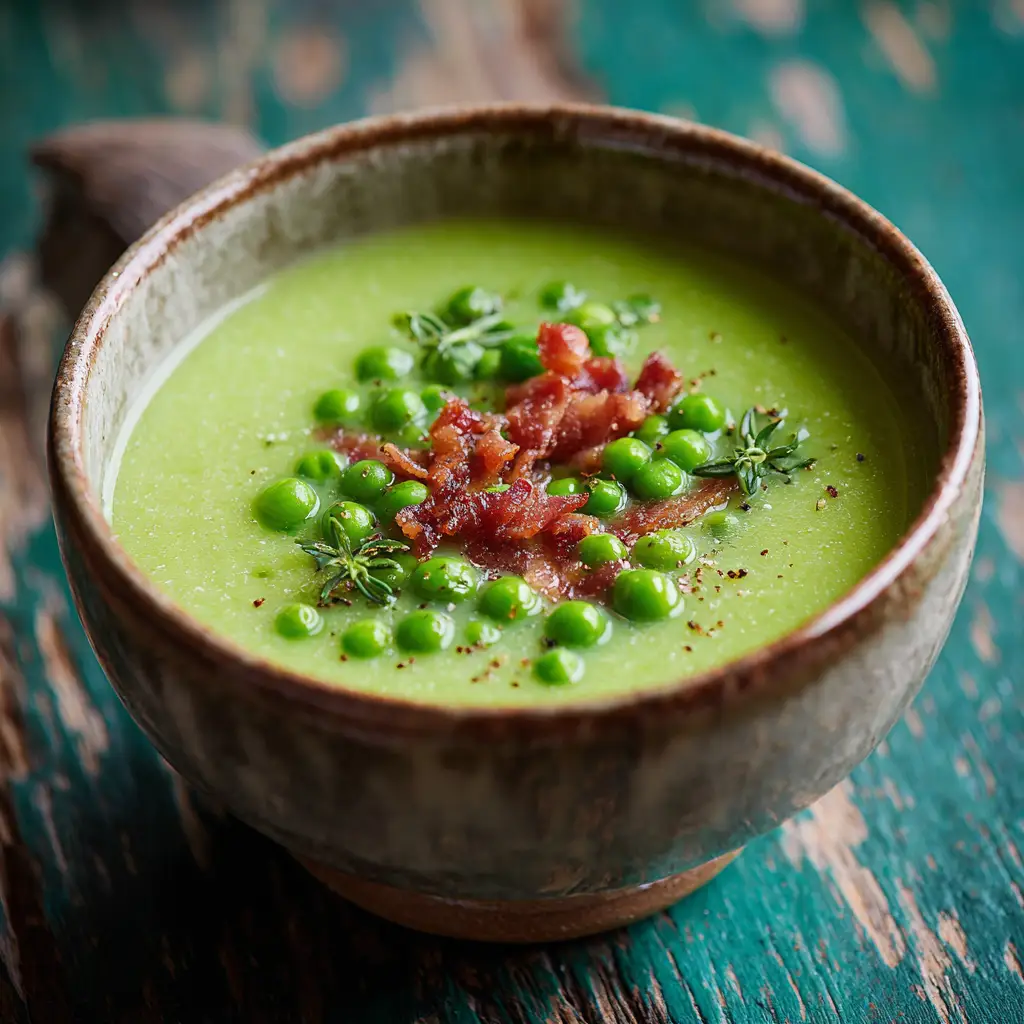
Home cooks often love pea soup for how effortlessly it brings flavor and nutrition together. It feels rustic yet elegant, simple yet deeply satisfying. The preparation is forgiving and adaptable, which makes it perfect for beginners and experienced cooks alike. With just a few ingredients and some patience, anyone can create a rich, velvety soup that speaks to the heart.
The appeal of pea soup lies not only in its taste but also in its versatility. It can serve as a main meal on a cold day or as a starter for a family gathering. The subtle sweetness of peas pairs beautifully with herbs, spices, and even smoked additions. Every region and household has its own variation, and that personal touch is what makes it so special.
If you have never tried making pea soup from scratch, you might be surprised at how simple and rewarding it can be. Once you understand the basics, you can experiment with endless flavor combinations. The following guide walks through everything you need to know to create a wholesome and delicious pea soup at home.
Ingredients Needed
Below is a list of essential ingredients for a classic pea soup recipe along with an approximate calorie count for each ingredient. These values are estimates based on standard serving sizes.
| Ingredient | Quantity | Approximate Calories |
|---|---|---|
| Dried split peas | 1 cup | 230 |
| Olive oil | 1 tablespoon | 120 |
| Onion (chopped) | 1 medium | 45 |
| Carrot (chopped) | 1 medium | 25 |
| Celery stalk (chopped) | 1 stalk | 10 |
| Garlic (minced) | 2 cloves | 10 |
| Vegetable broth | 4 cups | 40 |
| Bay leaf | 1 leaf | 0 |
| Salt | 1 teaspoon | 0 |
| Black pepper | ½ teaspoon | 3 |
| Fresh parsley (chopped) | 1 tablespoon | 4 |
Total estimated calories per serving: approximately 190–220 (depending on serving size and added oil).
Step-by-Step Cooking Instructions
- Prepare the peas.
Begin by rinsing the dried split peas under cool water until it runs clear. This removes excess starch and any small debris. Soaking them for about one hour can help them cook faster, although it is not required.Another classic you shouldn’t miss is Spinach Soup which complements this dish well. - Sauté the vegetables.
Warm olive oil in a large pot over medium heat. Add chopped onions, carrots, and celery. Stir frequently until the vegetables soften and the onions turn translucent. This usually takes about five to seven minutes. Add minced garlic and cook for another minute, releasing its aroma. - Add peas and broth.
Stir in the rinsed peas. Pour in the vegetable broth and add the bay leaf. Mix everything well and bring it to a gentle boil. Once it starts bubbling, reduce the heat to low and let it simmer uncovered. - Simmer slowly.
Allow the soup to simmer for about forty to fifty minutes, stirring occasionally. The peas will gradually soften and begin to break down, creating a creamy consistency. If the soup becomes too thick, add a little water or more broth to adjust the texture. - Season and blend.
Remove the bay leaf and season with salt and black pepper. For a smoother soup, use an immersion blender to puree it directly in the pot. If you prefer a chunkier texture, mash a portion of the peas with a spoon and leave the rest whole. - Garnish and serve.
Sprinkle freshly chopped parsley on top for a burst of color and freshness. Serve the soup hot with crusty bread or crackers on the side.
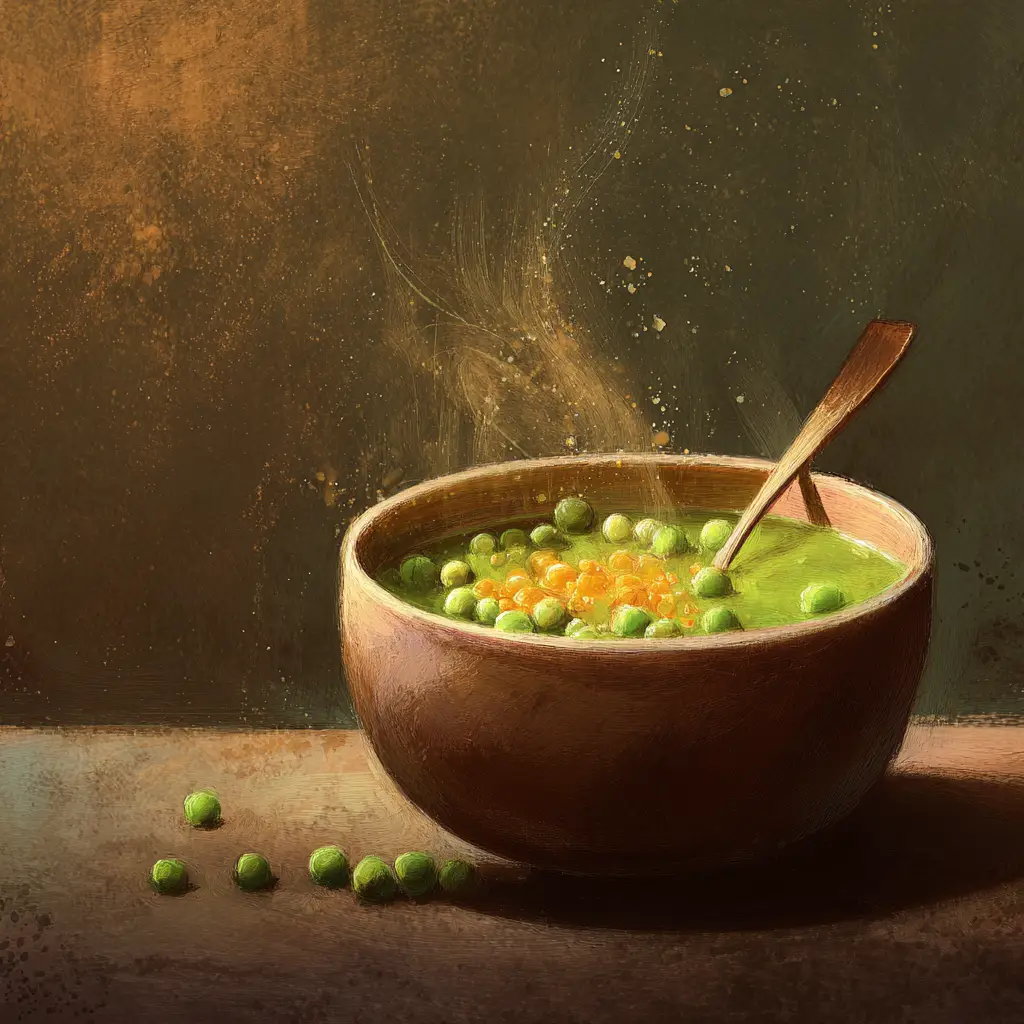
Tips for Customizing the Recipe
Pea soup is a canvas for creativity. You can modify it to match your taste, diet, or seasonal ingredients.
- For extra flavor: Add a smoked element like cooked bacon or smoked paprika. These ingredients deepen the taste and give the soup a rich aroma.
- For a creamy finish: Stir in a splash of coconut milk or a dollop of cream just before serving. This adds smoothness and a touch of sweetness.
- For more protein: Include diced ham or cooked chicken. These additions make the soup heartier and suitable as a complete meal.
- For a vegan version: Stick to vegetable broth and olive oil. Avoid dairy-based garnishes and use nutritional yeast for a cheesy flavor.
- For a fresh spring twist: Substitute dried peas with fresh green peas. The result will be lighter and brighter in color, perfect for warmer days.
Experimenting with herbs can also change the soup’s character. Try thyme, rosemary, or even mint for a refreshing touch. Each herb brings a different dimension to the humble pea.
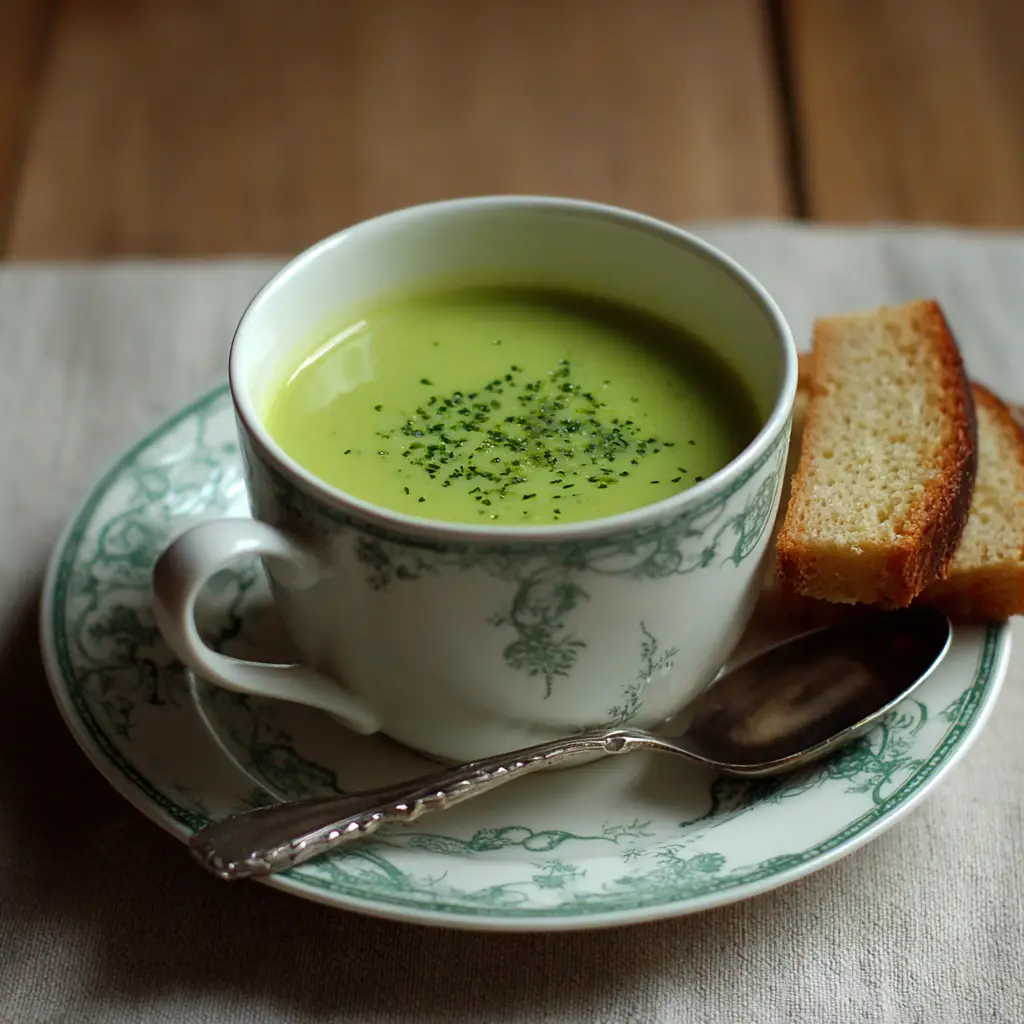
Nutritional Information
A standard serving of pea soup (about one and a half cups) provides an excellent balance of nutrients. Below is an approximate breakdown per serving:
Pea soup is naturally high in fiber, which promotes digestion and helps maintain a feeling of fullness. It is also rich in plant-based protein, making it a satisfying meat-free option. The combination of vitamins and minerals supports overall wellness and immune health.
Serving Suggestions
Pea soup pairs beautifully with many side dishes and toppings. Serve it with warm, crusty bread, whole grain rolls, or garlic toast to soak up the flavorful broth. A simple green salad with lemon dressing balances the richness of the soup perfectly.
For a heartier meal, top the soup with croutons, shredded cheese, or crispy chickpeas. If serving as part of a dinner menu, start with a light appetizer like roasted vegetables or fruit salad. Pea soup also stores well and tastes even better the next day after the flavors have mingled overnight.
When serving to guests, drizzle a little olive oil or sprinkle red pepper flakes on top for an elegant presentation. A side of buttered corn muffins or roasted potatoes makes the meal even more comforting.
Pea Soup Recipe | Easy Homemade Split Pea Soup for Comfort and Nutrition
Course: Blog4
servings15
minutes50
minutes200
kcalIngredients
1 cup dried split peas (rinsed)
1 tablespoon olive oil
1 medium onion, chopped
1 carrot, chopped
1 celery stalk, chopped
2 cloves garlic, minced
4 cups vegetable broth
1 bay leaf
1 teaspoon salt (or to taste)
Directions
- Prepare the peas:
- Rinse the dried split peas in cool water until the water runs clear. Soaking for one hour is optional but helps reduce cooking time.
- Cook the vegetables:
- Heat olive oil in a large soup pot over medium heat. Add onion, carrot, and celery. Cook until the vegetables soften and the onion turns translucent, about 6–7 minutes.
- Add garlic and peas:
- Stir in the garlic and cook for one minute until fragrant. Add the rinsed peas and mix well with the vegetables.
Recipe Video
Notes
- For a richer flavor, add a small piece of smoked ham or a dash of smoked paprika.
To make it vegan, keep it simple with vegetable broth and olive oil only.
The soup thickens as it cools. Add a bit of water or broth when reheating to adjust the consistency.
Frequently Asked Questions
1. Can I freeze pea soup?
Yes, pea soup freezes very well. Allow it to cool completely before transferring it to airtight containers. It can be stored in the freezer for up to three months. Reheat gently on the stove, adding a bit of water or broth to restore its original consistency.
2. How can I make pea soup thicker?
If you want a thicker soup, simmer it uncovered for a little longer or mash some of the peas with a spoon. You can also blend a portion of it and mix it back in to achieve a creamy texture.
3. Can I use canned peas instead of dried peas?
Canned peas can be used, but the flavor will be milder and the texture less creamy. If using canned peas, reduce the cooking time and adjust the seasoning carefully.
4. Is pea soup healthy for weight management?
Absolutely. Pea soup is low in fat and high in fiber and protein, which helps control hunger and supports healthy digestion. It is a wholesome addition to any balanced diet.
5. How long does homemade pea soup last in the refrigerator?
It can last for about four to five days if stored in a sealed container. Reheat over medium heat and stir occasionally to maintain its smooth texture.
Conclusion
Few dishes deliver comfort and nutrition as beautifully as pea soup. Each spoonful tells a story of simplicity, warmth, and home-cooked goodness. Preparing it requires little effort but rewards you with rich flavor and nourishment. Whether enjoyed on a cold evening or served as part of a festive meal, pea soup never disappoints.


